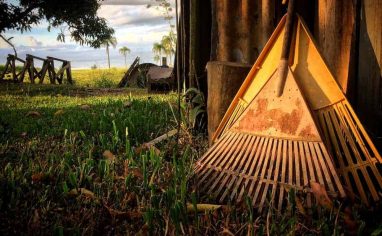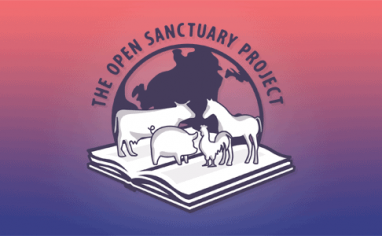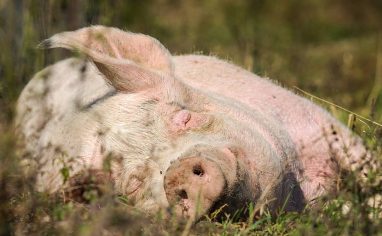
Subscribe To The Open Sanctuary Podcast
If you’d like to get the latest episodes of The Open Sanctuary Podcast, you can subscribe for free on all Podcast platforms, including Apple Podcasts and Spotify!
Episode Notes
Executive DirectorThe individual formally in charge of final decision making at an organization, who sometimes works closely with the organization’s Board of Directors. Sometimes a Founder is an Executive Director, especially early in a nonprofit’s growth stages. Mckenzee and NonprofitA non-governmental organization whose primary purpose is something other than selling goods or services. Specialist Julia discuss the cases for and against adoption policies at your animal organization and the considerations you must consider when implementing one. We talk about vetting homes, the paperwork you should have in place, the templates we have to help you, and more! To learn even more about how your organization could potentially increase your capacity through adoption, listen to this episode!
—
This Episode’s Referenced Open Sanctuary Project Resources:
- A Forever Home? Adoption Program Considerations For Animal Sanctuaries | The Open Sanctuary Project
- The Open Sanctuary Project’s Sanctuary Resident Adoption Application Template | The Open Sanctuary Project
- The Open Sanctuary Project’s Sanctuary Resident Adoption Contract Template | The Open Sanctuary Project
- The Open Sanctuary Project’s Sanctuary Resident Adoption Record | The Open Sanctuary Project
- The Microsanctuary Resource Center
Episode Transcript (Auto-GeneratedThe following content was transcribed through an automated process and may contain transcription errors or misspellings.)
Mckenzee Griffler: Hey there, sanctuary and rescue folks. Welcome to another episode of the Open Sanctuary podcast. I am Mckenzee Griffler. I’m the executive director of the Open Sanctuary Project, and with me I am here again with my colleague and friend Julia Magnus. We’ve done a couple podcasts on the subject of capacity for animal sanctuaries and rescues, and I know that we have a lot of really great resources on that subject as well at our website, opensanctuary.org. Capacity may be one of the most important considerations that you need to keep in mind when it comes to providing responsible lifelong care to your sanctuary residents. While we’ve covered all of the different elements of capacity that you’ll need to consider in one podcast and how you can take measures to make sure that you stay within those limits in another podcast, today we want to talk about one specific way that you could potentially expand your capacity as an animal organization. And that would be specifically for sanctuaries because rescues, I think, adoption is pretty built into the model. But if you’re an animal sanctuary, you could consider an adoption program. But not every sanctuary has an adoption program, and there’s good reasons for both. So, let’s talk a little bit about the basics of an adoption program for sanctuaries, and where a sanctuary’s philosophy of care might fall in line, where their other metrics of capacity might fall in line, and other reasons why an adoption program might be a great idea for your sanctuary, or maybe something to consider down the road, or something to consider just not worrying about as far as your organizational model. So, Julia, what’s the case for an adoption program for animal sanctuaries?
Julia Magnus: So, keeping in mind, as we all know, the overwhelming need for homes for animals, well-organized adoption programs can help create more space in sanctuary environments for potential residents and especially in the case of residents who might have advanced care needs. So the residents’ new adopted forever homes can serve as places that don’t just care for them but also advocate for them, potentially under the banner of a micro-sanctuary, in particular if the adopting party chooses to use that designation. I’m thinking of a situation where somebody rescues, for example, a disabled animal who might not fit in well in a larger sanctuary context but could do really well with a caregiverSomeone who provides daily care, specifically for animal residents at an animal sanctuary, shelter, or rescue. who has just a few animals. So, as a side note, to learn more about Micro Sanctuaries, check out the link in our show notes to the Micro Sanctuary Resource Center. So really the case for adoption, implementing a program can help potentially save more individual lives. Some sanctuaries will adopt out certain rescues who will never become permanent residents of their sanctuary and instead choose to use their resources to find a home, a good home, keep them safe while they vet new guardians for them. And this kind of allows the sanctuaries to take an active role in caring for more animals without being dedicated to the lifelong entirety of their care for their entire lives. And I’m sure we’ve got an asterisk on that last sentence that we can talk about a little later, but overall it sounds pretty great to me.
Mckenzee Griffler: I will say that one thing to keep in mind is that in any instance when you’re starting any new program at your animal organization, be it an adoption program or otherwise, that is going to require a capacity investment of some way or another. So it feels important to say that organizations should be aware of what is required to build a successful adoption program because obviously we want an adoption program that is really providing beautiful, loving, well-equipped homes for the lifetime of this resident. But what does that look like specifically?
Julia Magnus: Well, there are a lot of elements to consider, and the first one and probably one of the most time-intensive and important ones in my view, would be vetting the prospective homes. So when you’re looking at homes, say you have a big rescue and you’re looking to place a number of the rescued animals, you may have, if you get, for example, media attention, a lot of people stepping forward saying, “Hey, I’d love to adopt one of these beings. That sounds great. I’d love to help out.” But they may not necessarily all meet the standards that you want for new homes. So, things that you would want to consider when you’re vetting these potential adopters would include questions about the interested party’s background, any affiliation they might have with other animal organizations, their knowledge level of the species that they’re interested in, detailed descriptions of the living spaceThe indoor or outdoor area where an animal resident lives, eats, and rests. that they’re proposing or planning on creating, and whether or not they have qualified veterinary care access. That is a big one. Also, this is going to come up a little bit more later, but think about where they’re located. Sometimes if you have a big rescue with a lot of attention, you might get out-of-state applicants for adoption. And that may or may not be great. We’ll get to it more later, but just put a pin in it, remembering that many sanctuaries are going to require that if someone is unable or unwilling to care for an adopted resident, that they may have the right to retrieve them ultimately. And location can come into play when this is a consideration for a few reasons. Another part of vetting, some sanctuaries will want to schedule in-person interviews with adopters and potentially visit the new potential forever home for their residents. If site visits to the new home aren’t possible, I really strongly suggest that you ask for up-to-date photographs of living spaces, other residents that they may have, and also ask for veterinary references. One little tip, I’ve had this happen before where people have sent pictures and I’ve reverse Google image searched them and found that they were like stock photos. So, it’s a good idea if you can’t visit in person to do a little bit of extra digging. Maybe if you’re unsure if this is in fact actual depictions of the actual site where these residents will be, ask for more if you possibly can do an on-site visit. You just want to make sure everything’s in line with what you’re expecting. Another thing to keep in mind with vetting is the species type that you’re talking about because many species can become depressed or anxious if they live alone. So, some sanctuaries might require that certain species be adopted with one or more friends or relatives. Some sanctuaries are really strict about which residents can be adopted or will choose the exact resident, like pick the perfect match for the person who’s applying for adoption. While other sanctuaries might want to let interested adopters get to know residents on an individual basis before deciding who they’d like to care for.
Mckenzee Griffler: And of course, another element of vetting somebody and where a resident might be living is, of course, our friend zoning because you might have figured out your perfect zoning situation for your animal sanctuary, but that might be completely different depending on the species, depending on the neighborhood, depending on the county, depending on the state. It’s really important to look at all of that information when you’re trying to place an animal in a suitable forever home because ideally you don’t want to move an animal, acclimate them, and then you learn a couple months later, “Oh, I just got a letter from the county that says I can’t have this sheep,” and what are you going to do then? Another way to sort of consolidate all of this vetting and information gathering is through an adoption application. And we have taken some of the work out of this element of the adoption process for you because we’ve created a model adoption application which is linked in the show notes. You can download this, modify it as necessary for your organization’s use. And keep in mind that some questions may be applicable to some sanctuaries or species, others may not. Certain other sanctuaries might want to add questions to this. But let me also add a side note, as I tend to do, which is that with all documents that have any legal import at all, we suggest strongly that you have them reviewed by qualified local council just to make sure that they comply with the rules of your local jurisdiction. Absolutely. So, let’s say, Julia, that you’ve gotten through the vetting and you’ve decided that a prospective adopter is a great candidate and you feel really good about it. What then?
Julia Magnus: That’s a big yay. I always love that moment. So once it’s decided that adoption is appropriate, you found a good match, then you have to think about adoption fee, which would come into play in your adoption contract. Of course, you want to fill out all the paperwork, which is your adoption contract. Decide whether you are going to transport the resident, whether your adopters are going to do it. You may want to put, I’m sure that you will want to put in your contract that no exploitationExploitation is characterized by the abuse of a position of physical, psychological, emotional, social, or economic vulnerability to obtain agreement from someone (e.g., humans and nonhuman animals) or something (e.g, land and water) that is unable to reasonably refuse an offer or demand. It is also characterized by excessive self gain at the expense of something or someone else’s labor, well-being, and/or existence. or harmThe infliction of mental, emotional, and/or physical pain, suffering, or loss. Harm can occur intentionally or unintentionally and directly or indirectly. Someone can intentionally cause direct harm (e.g., punitively cutting a sheep's skin while shearing them) or unintentionally cause direct harm (e.g., your hand slips while shearing a sheep, causing an accidental wound on their skin). Likewise, someone can intentionally cause indirect harm (e.g., selling socks made from a sanctuary resident's wool and encouraging folks who purchase them to buy more products made from the wool of farmed sheep) or unintentionally cause indirect harm (e.g., selling socks made from a sanctuary resident's wool, which inadvertently perpetuates the idea that it is ok to commodify sheep for their wool). should come to this adopted resident. That the adoptee must care for the resident for the entirety of their natural life without ever selling or giving them away. Certain species might actually require government paperwork to legally transfer guardianship. And for example, if you’re another form of government paperwork that you might encounter is if you’re transferring animals across state lines, you might need to get health certificates. In that case, you might want to figure out how you’re going to allocate that cost and agree on that in advance. Again, with all these things, consult with your local legal counsel to make sure you’re complying with all applicable laws. Again, with transport, some sanctuaries will actually insist on delivering the residents themselves to the space rather than having adopters pick up or meeting part way. So, this gives them one last chance to take a look at the proposed living space and either figure out if there are any improvements that can be made that they can help with, take notes of things they want to follow up about, or in the worst-case scenario, postpone or cancel an adoption should they decide that any part of this living space or adoption scenario is too risky to allow the resident to live there. So, another contingency that you might want to build in in your contract is scheduling follow-up visits to ensure the ongoing health and well-being of the resident that’s been adopted out as well as a clause that the sanctuary can take back the resident if the adoptive guardian is not taking good care of the friend or cannot continue to do so.
Mckenzee Griffler: So I’m hearing a lot of places where a sanctuary will have to make investments in terms of their personnel capacity for follow-ups for transport for vetting. This is all to say that there’s a cost for adoption programs, and the cost is bandwidth, even if everything else you manage to do at no cost. And that’s always something to consider with something like this. And I also know that the last thing that we talked about, the clause about taking back the resident, that can get really challenging depending on the jurisdiction that you live in and where the adopted resident is going. So, that’s something that if you want that clause in your adoption contract, you really have to run it past legal counsel in your area that’s familiar with the laws to make sure that that’s hunky-dory.
Julia Magnus: Yeah. Once an individual has left your legal jurisdiction and they’re somewhere else and you don’t have a provision for, God forbid, this should go to litigation where your jurisdiction should be or where venue should be for this lawsuit, you can be stuck bringing a lawsuit in a totally different jurisdiction which could be cost-prohibitive, energy-prohibitive. So, definitely worth thinking about these things in advance. And we do have, just as we have an adoption application, we have an adoption contract which you can download, modify as you need, and bring to your local legal counsel to have them check through it, make sure everything that you want is covered.
Mckenzee Griffler: Yeah. And I also know that with this adoption contract, it’s something that you’re going to want to go through pretty well with a prospective adopter so that if nothing else, you’re both on the same page. You’ve talked it out. You have an understanding of what the situation is. This isn’t something that you’re going to want to just leave boilerplate on somebody’s desk. You’re going to really want to have a good relationship so that if there are any challenges, you can work on them together in a friendly way and really hopefully minimize any misunderstandings or challenges that might come down the line that might have just been a communication issue. Right?
Julia Magnus: And one thing that’s helpful is in addition to these templates we’ve mentioned, we have a whole resource on adoption programs which includes a breakdown of our adoption contract form which explains each provision in it, why it’s there and how it works. So that can be a helpful tool when you’re forming this relationship with your adopter and making sure that you both have come to the same terms.
Mckenzee Griffler: Absolutely. And one more important record is keeping an adoption record. Yes. Yes. Super important. So, once you’ve adopted the resident out, keep a record of that adoption. And we have a template for that, too. So, all of these are linked in the show notes. It can take a little bit of the work out of creating an adoption program. Keep in mind, you’re still going to have to do work, but this is all designed to make it a little bit easier for you.
Mckenzee Griffler: And designed to make sure that just like we want every sanctuary with a success story, every sanctuary adoption program will hopefully also be closer to a success story with these tools in mind. So, I think we’ve done a pretty good job explaining why it makes a lot of sense for certain sanctuaries to have an adoption program. What are some reasons why you might want to consider not having an adoption program?
Julia Magnus: Well, there are a number of reasons and it may depend on the individual. It depends on the sanctuary. Let’s think about a resident first. So, imagine a resident who’s been through a lot of trauma in their life. Think about a cockfighting survivor who has been poorly treated and now all of a sudden is shuffled to a sanctuary space and is just trying to get their bearings. You might not want to put that individual through yet another move and the trauma of adjusting to yet another place, especially if the adoption doesn’t work out if they might have to move back again. So again, from the resident perspective, another reason that you might not want to adopt an individual out is if they’re attached to others in their herd or their flock that they have bonds with that they have gotten to know and appreciate in their lives and separating them would actually cause them harm. In that case, you might not adopt that resident out.
Mckenzee Griffler: Yeah. And so there might be a good midpoint where we say these residents might be great candidates for adoption or maybe if we had assisted in a bust and there’s a lot of new residents in and they’ve been quarantined and they’ve been checked over by a vet and they have manageable health conditions, they might be a great candidate to send out into an adoptive home. And just the same, there might be a lot of residents that you feel like they really have a great home here. They’ve got great support. They’ve got people that understand exactly what they’re going through. And so they might never be a part of a sanctuary’s adoption program. And again, sorting out who are good candidates for adoption and who are not require careful observation, careful forethought, and are part of the resources that you will need to invest if you want to create a responsible adoption program.
Julia Magnus: So, you’ll need personnel from all sides to help vet adopting parties, keep an eye on the prospective adoptees, staff willing to travel, and so forth. And this is quite serious, because there have been public cases where well-meaning sanctuaries in a bind, maybe in a bust situation, or even just in the day-to-day of the adoption program, have adopted out residents only for those residents to end up being exploited or potentially even killed by the adoptive party. So, you may well decide that that risk is one that’s too big for you to take. And that’s okay. That’s okay if you make that decision. And then you can decide just not to do this. But again, one recommendation in addition to using these tools which are designed to make your life easier in all these regards, if you’re just starting out, you might want to just wait on starting an adoption program and focus on establishing a really good understanding of your capacity. Get really strong in your own care skills so you feel really solid with what you’re asking for from adopters, what you know are musts and must-nots for you. And just know that before you start your program, because if you’re not fully grounded in what your residents need, it’s harder to vet other people. And then also consider talking to other sanctuaries who do have adoption programs, asking them for their experience. And you can even run prospective adopters past other sanctuaries because there have been times where you might have one adopter who was denied by one sanctuary for very good reasons who comes to you and what the reason for their denial was may not come across to you but somebody else may know something that you do not. And this is really going back to that beautiful thing that we say again and again. The sanctuary community is a community, and as a large disparate group of organizations with such a common goal, the more we can work together on things like this, the stronger our programs will be and the happier the lives of the residents in our care will be.
Mckenzee Griffler: So, let’s say that a sanctuary just got through that last lovely section and said, you know, maybe it’s not time for me to have an adoption program just yet. Maybe down the line, but right now, let’s not do that.
Julia Magnus: What could a sanctuary do instead of having an adoption program? There are options. Consider a virtual adoption program and adopt a resident sponsorship program. A lot of sanctuaries have balanced success getting supporters to financially support residents in this way. These supporters could be given, say they adopt Fuego the rooster, they could be given special updates or, depending on your sanctuary’s philosophy of care, special guided visitation with the resident that they’re supporting. You could maybe print out pictures. You could do all kinds of things to engage with this donor supporter, virtual adopter. What you’ll want to do though is just make clear where the monies from such sponsorships are going. Some sanctuaries might clarify that this could go into a general fund for care for other residents of the same species or sanctuary-wide as well. This can avoid a situation where you might get outrage if in the unfortunate event that Fuego the rooster passes away. And again, you should alert your supporter who’s supporting Fuego of that fact that they’re wondering now where does the money go. So in other cases you may just want to have the funds be strictly allocated for Fuego and have those funds strictly for him. Also you might want to pick your residents that you want to be virtually adopted carefully. Some sanctuaries might implement this program where a particular resident requires extra financial support due to, for example, health challenges or special care needs. But if you do feel comfortable navigating all that and being accurate and transparent with your supporters, sponsorships are tried and true for providing resources and they do help your supporters feel invested in the life and well-being of Fuego and/or all your other residents.
Mckenzee Griffler: Absolutely. Yeah, that’s a great one that I see happening at so many sanctuaries. And while you’re absolutely right, there’s a couple asterisks in there to make sure you’re doing it well. It is a great opportunity, especially if you’re not ready for a full adoption program or even a partial adoption program. Or you could do both. Very possible. Of course, again, it’s just going to be more of a capacity investment. And that’s what I’m hoping that we can help with this capacity series explain is that every decision you make at a sanctuary is going to be an investment of some sort or another. So, it’s great to have as much information as possible to make these decisions as efficiently and within your philosophy of care as possible. So, I think that’s a good little primer on adoption programs. I hope that our discussion was helpful to you, the sanctuary audience, and your animal organization and your residents. The resources and templates that we’ve referenced can be found in the show notes as always and they can also be found at opensanctuary.org by searching for adoption in the search bar at the top left. If you choose to embark on an adoption program or if you choose to use them with an existing adoption program, we really hope that they’re helpful. And if they’re helpful or if you’ve got suggestions for how they could be even more helpful, we’d love to hear it because we love hearing feedback and questions and comments from sanctuaries. And speaking of that feedback, if you found this episode valuable, please consider leaving a five-star review. And if you have any additional feedback or ideas for subjects that you would like us to cover, feel free to reach out to us on our website as well, especially in terms of podcast episodes because I know there’s a lot of stuff in sanctuaries and rescues and we want to make sure that we are covering what our audience is most interested in getting our takes on. And finally, if you like what we do at the Open Sanctuary Project and you’d like to support our work, subscribe to the Open Sanctuary podcast, we warmly welcome donations. We ourselves are a 501c3 organization, so your donations are tax-deductible and help us sustain our missionThe stated goals and activities of an organization. An animal sanctuary’s mission is commonly focused on objectives such as animal rescue and public advocacy. of providing freely accessible resources so that every sanctuary worldwide is a success story. Thanks for listening.

Got A Podcast Idea? Contact Us!
If you have a topic or question you’d love to hear our staff address on The Open Sanctuary Podcast, please get in touch via our contact form!








